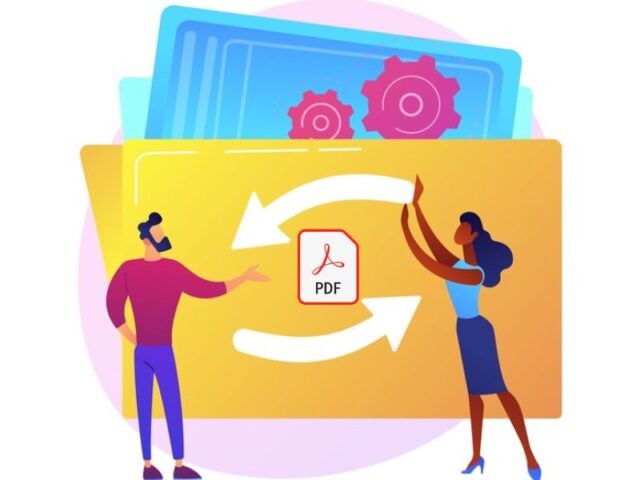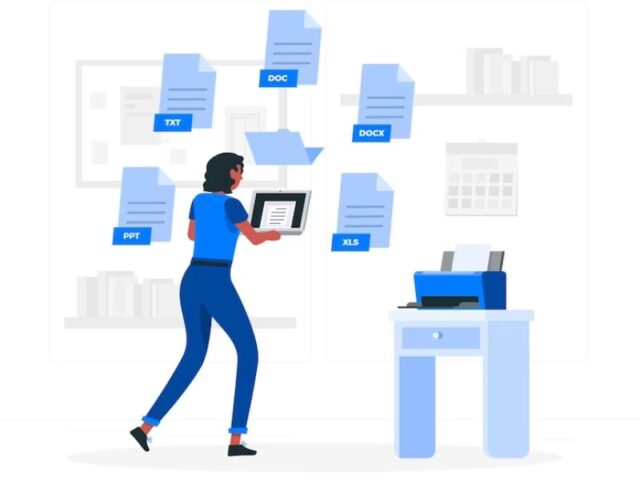In today’s digital age, the ability to easily and effectively create PDFs is an essential skill for professionals in all industries. With the increasing reliance on electronic documents, knowing how to create and manipulate PDFs can greatly improve productivity and streamline business processes. However, the process of creating PDFs can be daunting for those who are not familiar with the necessary tools and techniques.
Learn how to create PDF documents effortlessly with simple and intuitive software tools. That’s why in this article, we will discuss the essential tips and techniques for creating PDFs with ease. From selecting the right software to mastering key features, we will provide a comprehensive guide for professionals looking to enhance their PDF creation skills.
Whether you are a beginner or an experienced user, this article will provide valuable insights and practical advice to help you create professional and high-quality PDFs efficiently. So, let’s dive in and discover the secrets to making PDF creation a breeze.
Efficiently Convert Documents to PDF

In today’s digital age, the ability to efficiently convert documents to PDF format has become an essential tool for businesses and individuals alike. Gone are the days of printing out physical copies or struggling with incompatible file formats. Converting documents to PDF not only ensures that the content remains intact, but it also provides a universal format that can be easily shared and accessed across different devices and platforms.
With a simple click of a button, users can convert various types of files, such as Word documents, Excel spreadsheets, PowerPoint presentations, and even images, into professional-looking PDFs. This seamless conversion process not only saves time but also maintains the integrity and visual appeal of the original documents.
Whether it’s for archiving important records, sending secure contracts, or creating polished marketing materials, mastering the art of efficiently converting documents to PDF is an invaluable skill in today’s digital landscape.
Mastering PDF Editing Tools
As important as it is to convert documents to PDF format, it is equally crucial to have a strong command over PDF editing tools. These tools empower users to make necessary modifications, add annotations, and collaborate seamlessly on PDF files. With the right PDF editing software, users can easily manipulate text, resize images, insert hyperlinks, and even add watermarks.
Additionally, advanced editing features enable users to merge multiple PDFs into a single document, split large PDF files into smaller ones, and extract specific pages for convenience. By mastering PDF editing tools, users can enhance productivity, streamline document workflows, and ensure that their PDF files meet their exact specifications.
Whether it’s editing legal contracts, reviewing academic papers, or perfecting design layouts, having a comprehensive understanding of PDF editing tools is an essential skillset for professionals in various industries.
Organizing Pages for Seamless Navigation

To create a truly user-friendly PDF document, organizing pages for seamless navigation is key. By strategically arranging the content within your PDF, you can enhance the readability and accessibility of the document. One effective technique is to utilize bookmarks, which act as interactive links that allow users to quickly navigate to specific sections or pages within the PDF.
This is especially useful for lengthy documents, such as manuals or reports, where finding relevant information efficiently is crucial. Additionally, utilizing headers, footers, and consistent page numbering can further assist in easy navigation. By employing these organizational techniques, you can ensure that readers can effortlessly locate and access the desired information within your PDF, resulting in a positive user experience and increased efficiency.
Enhancing Security with Password Protection
In addition to organizing your PDF document for optimal usability, it is essential to prioritize the security of your sensitive information. One effective way to enhance security is by implementing password protection. By assigning a password to your PDF, you can restrict access to authorized individuals only, ensuring that confidential data remains secure.
When selecting a password, it is recommended to use a combination of uppercase and lowercase letters, numbers, and special characters to create a strong and unique password. Furthermore, consider regularly updating the password to maintain the integrity of your document’s security. By integrating password protection into your PDFs, you can confidently share sensitive information while mitigating the risk of unauthorized access.
Utilizing PDF Compression for Easy Sharing

PDF compression is a valuable technique to optimize the sharing and distribution of your PDF documents. By reducing the file size of your PDFs, you can minimize storage requirements and make it easier to transmit them electronically. This is particularly beneficial when sharing large files via email or uploading them to online platforms.
Utilizing PDF compression not only saves valuable storage space, but it also speeds up the transfer process, ensuring that recipients can quickly access and download the files without any inconvenience. By efficiently managing the file size through compression, you can streamline the sharing of your PDF documents, enhancing productivity and facilitating seamless collaboration.
Conclusion
Creating PDFs may seem like a daunting task, but with the right tips and techniques, it can become a simple and efficient process. By utilizing features such as bookmarking, metadata, and security settings, you can ensure that your PDFs are organized, searchable, and protected. With these essential tools, you can confidently create high-quality PDFs for any project or presentation. So the next time you need to create a PDF, remember these tips and techniques to make the process easy and stress-free.





